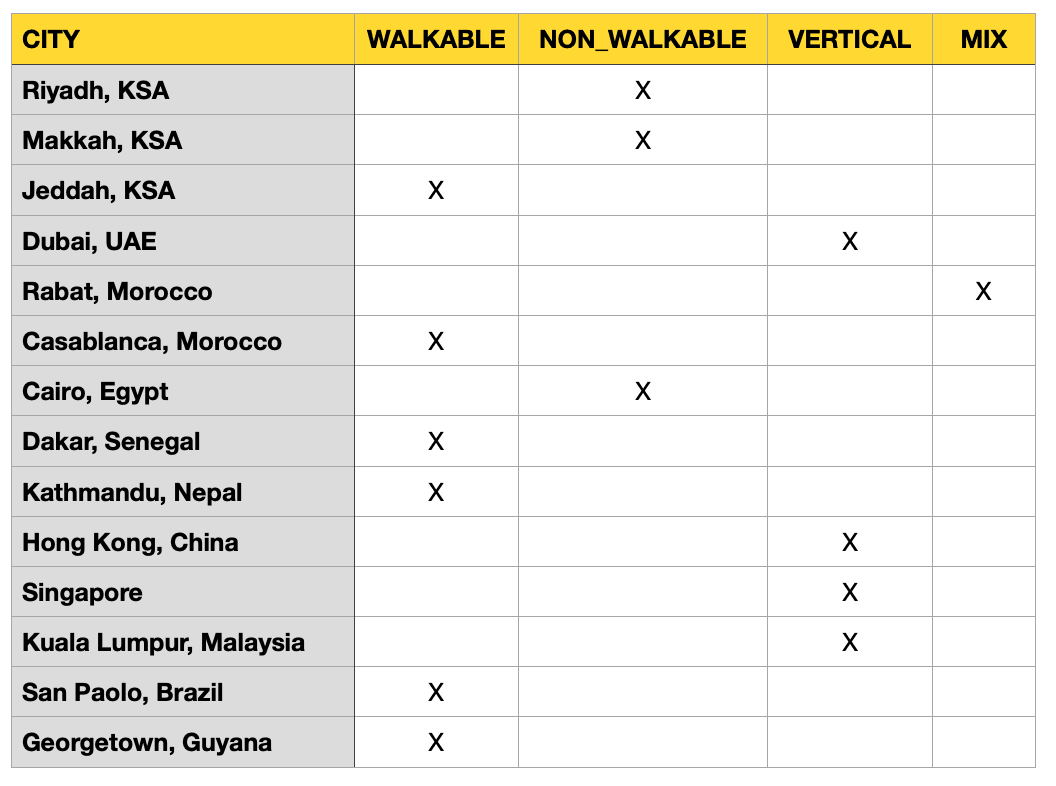Walking is the first and primary mode of mobility for people. Although lately, it is not well recognized and many times it is not considered to be a transportation mode. This omitting of consideration is crucial in urban planning, shaping two major styles in urban design (walkable and non-walkable cities).
Historically, these two styles have been developed in Europe (walkable cities) and USA (non-walkable cities). First, the norm was walking-first as the European cities had been designed and developed before the invention of the car.
Then, it was changed to car-first in the cities in the USA which saw their larger development after the adoption of the car. As the personal vehicle provides personal freedom and easy to travel long distances, the designs proposed a clear separation between personal (family) and professional life. The USA city designs introduced the concepts of industrial zones and "urbanizations/ dormitories". In many cases, this space separation may extend to more than 50 km, which makes which makes the USA cities non-walkable.
Walking the City
Walking in a city provides a unique way of understanding the most fundamental relationship between the city and its citizens.
The fact that a city design allows you to walk around safely, speaks about respect and putting high value in the individual. The citizen feels welcomed and invited to participate in the city system.
Walking-first urban designs are not necessarily fit only for small and medium cities. An example of a walkable megapolis is San Paolo, Brasil. Although, one cannot walk San Paolo from one end to the other in a day, its design has been maintained walking-first. It has large walking passes in all its streets, prioritizing the pedestrians at all cross sections.
City mobility infrastructure may be defined as the heart of a city. A heart that loves or hates its citizens.
The USA city model of a vehicle-first transportation infrastructure makes the cities cold and unwelcomed to their citizens, especially to the needy. It discriminates and classifies its citizens by their ability to drive and own a personal vehicle. Additionally, it closes its citizens in functional zones limiting their ability to express and experiment life.
The personal vehicle which was meant to provide freedom, becomes the prison cell where up to a third of a person's life may be spent.
Understanding the City
At ADVANCED KNOWLEDGE, we have developed a specific analysis of the city system under the classification walkable/ non-walkable city. The method consists of three steps:
- Classification framework- measures a group of parameters related to the pedestrian infrastructure and experience, the alternative transportation modalities to the personal vehicle, overall estimate in personal life spent in commuting.
- Citizen engagement analysis- evaluates the citizen participation in the city system, the general citizen's sentiment towards the city, the "citizen life-span" in the city and its impact on the city economy.
- Recommendations for improvements- it is a list of actions which the city authorities may consider taking for improving and making-closer the relationship with their citizens. It may refer to converting a non-walkable city to a walkable one. It may refer to engaging further the citizen in the different functions of the city system.
The Cities around the World
Traveling outside Europe and USA, one may observe how their models have been adopted. European style has been adopted under the process of European colonization. It is preserved today in the old neighbourhoods of the cities. The USA style has been adopted in new urban developments since the 90s of XX century. It is visible in the renewing and new developments of historic cities such as Cairo, Egypt.
Then, China brings a new urban design model- the vertical city. This new model compacts an entire middle-size city in a skyscraper. It has been adopted in many countries in Asia and the Pacific due to the exponential growth of their population in relation to the available urbanization land.

